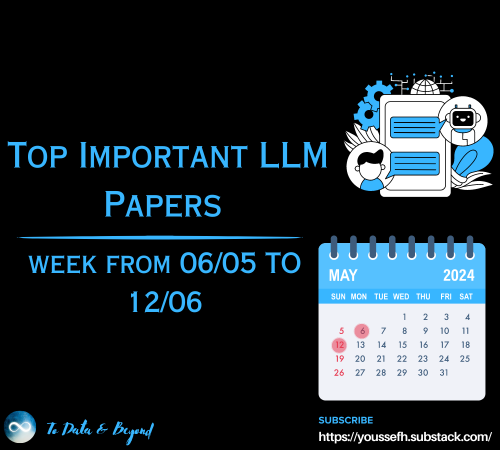
Exploring Linear Regression for Spatial Analysis.
Last Updated on May 15, 2024 by Editorial Team
Author(s): Stephen Chege-Tierra Insights
Originally published on Towards AI.
Exploring Linear Regression for Spatial Analysis.

Machine learning has become very popular in the world of technology, this is evidenced as witnessed in social media with topics like deep learning, artificial intelligence and machine learning dominating the conversation when it comes to technology-related topics.
But there is one machine learning algorithm that seems to be causing waves when it comes to Artificial intelligence, yes it is popular among data scientists, but I want to view it from a geospatial point of view and see its capabilities.
In my continuous quest to explore various machine learning algorithms for spatial analysis, in the latest one I explain linear regression in terms of exploring details about the earth’s wonders. Envision unravelling the enigmas concealed in the terrains, where each data point is more than simply a figure; it’s a geographic coordinate awaiting the revelation of its mysteries.
The focus of this effort to fully realize the promise of machine learning for spatial analysis is on Linear regression, a flexible technique that is well-known for its resilience and predictive strength. Although it is widely used in data science circles, its use in the geospatial domain gives up a plethora of opportunities, but what does this entail?
What is Linear Regression?
According to IBM, a variable’s value can be predicted using linear regression analysis based on the value of another variable. The dependent variable is the one that you wish to be able to forecast. The independent variable is the one you are using to forecast the value of the other variable.
In its most basic form, linear regression is the process of fitting a straight line to the data points to minimize the residuals or sum of the squared discrepancies between the observed and projected values. Finding the “best-fitting” line to depict the relationship between the variables is the goal of this procedure.
Linear regression is widely used in numerous fields such as economics, finance, social sciences, engineering, and natural sciences for tasks such as prediction, trend analysis, and hypothesis testing. It forms the basis for more multifaceted regression techniques and is a fundamental concept in both statistics and machine learning.
Linear regression models are relatively simple and provide an easy-to-interpret mathematical formula that can generate predictions. Linear regression can be applied to various areas of business and academic study.
Why is it ideal for Machine Learning?
Computational Prowess: Even when working with big datasets, linear regression models can be trained fast and with minimal computational overhead. They can, therefore, be used in real-time or almost real-time applications.
Very Simple to Use– Simplicity is very key in any machine learning algorithm, linear regression offers exactly that as simplicity is the ultimate sophistication. Its linear relationship concept makes sense and is simple to understand.
Easy To Learn– If you are going to delve into machine learning algorithms, linear regression is most often the first technique to learn as it is a good introductory point to other complex algorithms and offers easily interpreted models, including those without advanced statistical training.
Verifying Assumptions– Linear regression offers diagnostic instruments for verifying model presumptions, including homoscedasticity, independence of errors, and linearity. This enables users to evaluate the model’s validity and make any necessary revisions.
Availability of Python and R studios– Python and R studios are very popular for machine learning programming. Linear regression is available on these platforms through easily accessible libraries and simplified code.
Available documentation- Linear regression has vast documentation that can be accessed through various software Programs such as R Studios and Python.
Linear Regression in GIS
Linear regression is ideal for making sense of geospatial data, in GIS data, everything is related to everything through data and linear regression helps you understand how they all connect through spatial modelling.
According to Esri, Modeling, analyzing, and exploring spatial relationships are all made possible by regression analysis, which can also be used to shed light on the causes of observed spatial patterns. You might be interested in learning what causes higher-than-expected rates of diabetes or why people consistently pass away at a young age in some parts of the nation. Nonetheless, regression analysis can also be utilized for prediction by simulating spatial relationships.
For predictive modeling tasks in GIS, such as estimating urban expansion, changes in land use, or the appropriateness of habitat for animals, linear regression is used. Linear regression models utilize historical data on environmental conditions, land use, population growth, and other variables to predict future trends and patterns.
Linear regression helps urban planners and environmental managers analyze spatial patterns and trends to make informed decisions. For example, it can be used to assess the impact of urbanization on air quality, identify suitable locations for infrastructure development, or model the spread of pollutants in water bodies.
Regression analysis can be used for a large variety of other applications:
Modeling high school dropout rates to learn more about the things that keep students in school.
Calculating the relationship between speed, weather, road conditions, and other factors to predict traffic accidents and help shape policy.
Calculating the relationship between fire damage and variables, including property values, response times, and the level of fire agency engagement. You may need to construct additional fire stations if you discover that reaction time is the most important aspect. If you discover that participation is the most important element, you might need to send out more cops and equip more officers.
Python code snippet
# Import necessary libraries
import numpy as np
from sklearn.linear_model import LinearRegression
# Sample data (replace with your own dataset)
X = np.array([[1], [2], [3], [4], [5]]) # Independent variable
y = np.array([2, 4, 5, 4, 6]) # Dependent variable
# Create and fit the linear regression model
model = LinearRegression()
model.fit(X, y)
# Print the coefficients
print("Intercept:", model.intercept_)
print("Slope:", model.coef_[0])
# Predict using the trained model
X_new = np.array([[6], [7]]) # New data for prediction
predictions = model.predict(X_new)
print("Predictions:", predictions)
For Google Earth Engine
// Define the region of interest (ROI)
var roi = ee.Geometry.Point(-122.43, 37.75); // Example coordinates for San Francisco
// Load satellite imagery (example: Landsat 8)
var imageCollection = ee.ImageCollection('LANDSAT/LC08/C01/T1')
.filterBounds(roi)
.filterDate('2020-01-01', '2020-12-31');
// Select bands of interest
var bands = ['B2', 'B3', 'B4']; // Example: Blue, Green, Red bands
// Create feature collection with sample points (replace with your own)
var points = ee.FeatureCollection([
ee.Feature(ee.Geometry.Point(-122.44, 37.76), {'value': 10}),
ee.Feature(ee.Geometry.Point(-122.45, 37.74), {'value': 15}),
ee.Feature(ee.Geometry.Point(-122.42, 37.73), {'value': 20}),
]);
// Define independent and dependent variables
var independent = ee.ImageCollection.fromImages(points.map(function(feature) {
return ee.Image.constant(1).addBands(imageCollection).reduceRegion({
reducer: ee.Reducer.mean(),
geometry: feature.geometry(),
scale: 30,
}).toImage().rename(bands).toFloat();
}));
var dependent = points.map(function(feature) {
return ee.Feature(null, feature.toDictionary().value);
});
// Perform linear regression
var linearRegression = ee.Image(independent.iterate(function(image, result) {
var image = ee.Image(image);
var result = ee.Image(result);
var regression = image.select(bands).addBands(1).reduceRegion({
reducer: ee.Reducer.linearRegression(bands.length, 1),
geometry: roi,
scale: 30,
});
return ee.Image(result).addBands(regression);
}, ee.Image().toFloat()));
// Get coefficients
var coefficients = linearRegression.select('.*_coefficients');
// Print the coefficients
print('Coefficients:', coefficients);
// Display the result
Map.centerObject(roi, 10);
Map.addLayer(coefficients, {bands: '.*_coefficient'}, 'Regression Coefficients');
For R studios
# Load necessary libraries
library(dplyr) # For data manipulation
library(ggplot2) # For data visualization
library(stats) # For linear regression
# Sample data (replace with your own dataset)
# Example: Relationship between temperature and ice cream sales
temperature <- c(14, 16, 20, 22, 26, 28) # Independent variable (temperature in Celsius)
ice_cream_sales <- c(150, 170, 200, 220, 250, 270) # Dependent variable (sales in units)
# Create a data frame
data <- data.frame(temperature = temperature, ice_cream_sales = ice_cream_sales)
# Perform linear regression
model <- lm(ice_cream_sales ~ temperature, data = data)
# Print the summary of the regression model
summary(model)
# Visualize the data and regression line
ggplot(data, aes(x = temperature, y = ice_cream_sales)) +
geom_point() + # Add scatter plot
geom_smooth(method = 'lm', se = FALSE) + # Add linear regression line
labs(x = "Temperature (Celsius)", y = "Ice Cream Sales (units)", title = "Linear Regression") # Add labels and title
Conclusion
In conclusion, linear regression provides insightful information about spatial relationships, patterns, and trends and is a flexible and essential tool in Geographic Information Systems (GIS). Its use is widespread in several fields, such as public health, agriculture, urban planning, and environmental studies. Spatial analysts can analyze intricate spatial events, generate well-informed predictions, and facilitate evidence-based decision-making by utilizing linear regression within GIS.
To comprehend the complex relationships that exist between geographical factors and driving factors, linear regression is still a fundamental method that GIS uses to integrate with more sophisticated analytical techniques. This understanding ultimately helps to manage our geographically diverse world more sustainably and effectively.
Join thousands of data leaders on the AI newsletter. Join over 80,000 subscribers and keep up to date with the latest developments in AI. From research to projects and ideas. If you are building an AI startup, an AI-related product, or a service, we invite you to consider becoming a sponsor.
Published via Towards AI

 Logo:
Logo:  Areas Served:
Areas Served: 







